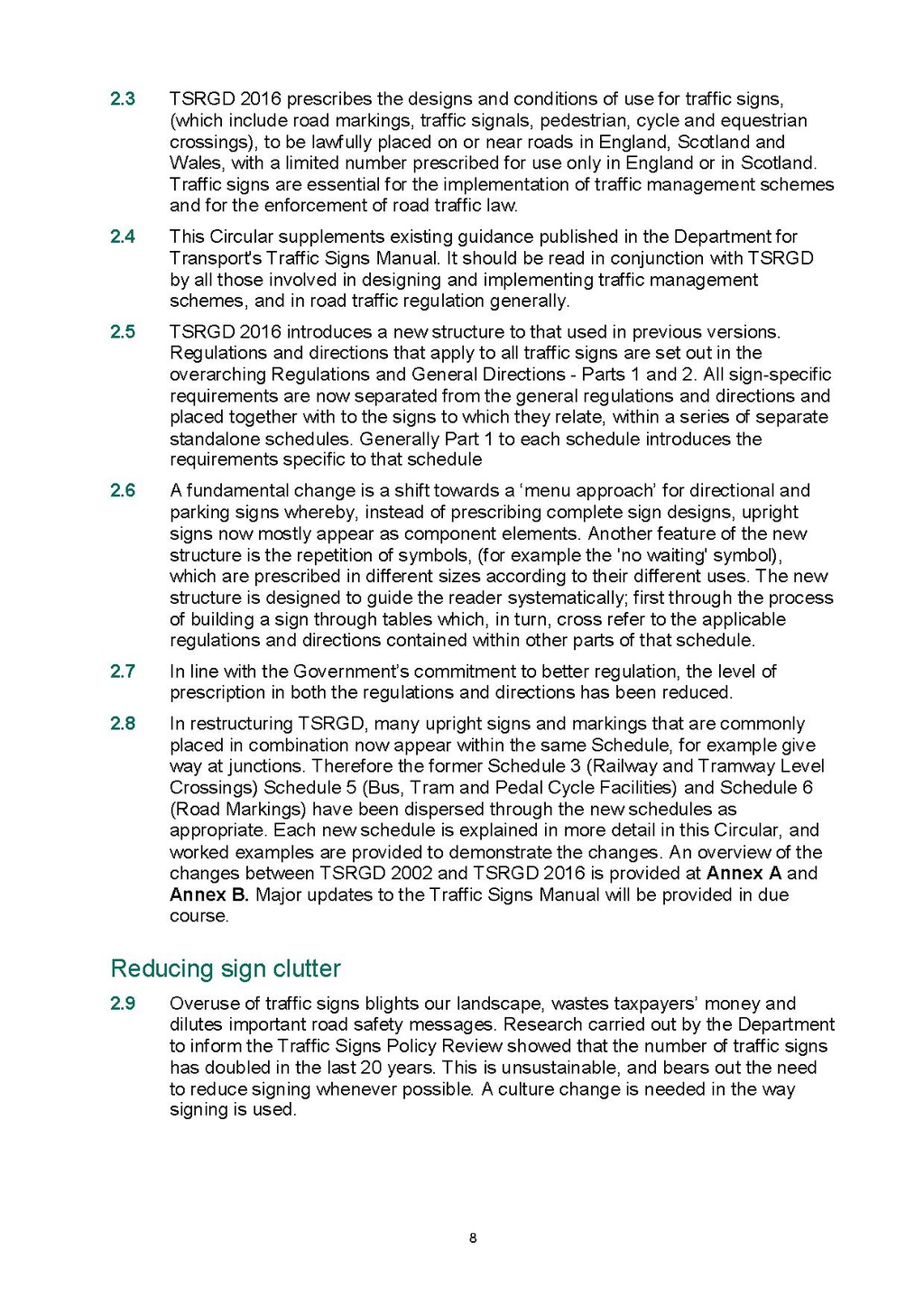This page has been validated.
2.3
TSRGD 2016 prescribes the designs and conditions of use for traffic signs, (which include road markings, traffic signals, pedestrian, cycle and equestrian crossings), to be lawfully placed on or near roads in England, Scotland and Wales, with a limited number prescribed for use only in England or in Scotland. Traffic signs are essential for the implementation of traffic management schemes and for the enforcement of road traffic law.
2.4
This Circular supplements existing guidance published in the Department for Transport's Traffic Signs Manual. It should be read in conjunction with TSRGD by all those involved in designing and implementing traffic management schemes, and in road traffic regulation generally.
2.5
TSRGD 2016 introduces a new structure to that used in previous versions. Regulations and directions that apply to all traffic signs are set out in the overarching Regulations and General Directions - Parts 1 and 2. All sign-specific requirements are now separated from the general regulations and directions and placed together with to the signs to which they relate, within a series of separate standalone schedules. Generally Part 1 to each schedule introduces the requirements specific to that schedule
2.6
A fundamental change is a shift towards a 'menu approach' for directional and parking signs whereby, instead of prescribing complete sign designs, upright signs now mostly appear as component elements. Another feature of the new structure is the repetition of symbols, (for example the 'no waiting' symbol), which are prescribed in different sizes according to their different uses. The new structure is designed to guide the reader systematically; first through the process of building a sign through tables which, in turn, cross refer to the applicable regulations and directions contained within other parts of that schedule.
2.7
In line with the Government's commitment to better regulation, the level of prescription in both the regulations and directions has been reduced.
2.8
In restructuring TSRGD, many upright signs and markings that are commonly placed in combination now appear within the same Schedule, for example give way at junctions. Therefore the former Schedule 3 (Railway and Tramway Level Crossings) Schedule 5 (Bus, Tram and Pedal Cycle Facilities) and Schedule 6 (Road Markings) have been dispersed through the new schedules as appropriate. Each new schedule is explained in more detail in this Circular, and worked examples are provided to demonstrate the changes. An overview of the changes between TSRGD 2002 and TSRGD 2016 is provided at Annex A and Annex B. Major updates to the Traffic Signs Manual will be provided in due course.
Reducing sign clutter
2.9
Overuse of traffic signs blights our landscape, wastes taxpayers' money and dilutes important road safety messages. Research carried out by the Department to inform the Traffic Signs Policy Review showed that the number of traffic signs has doubled in the last 20 years. This is unsustainable, and bears out the need to reduce signing whenever possible. A culture change is needed in the way signing is used.
8
